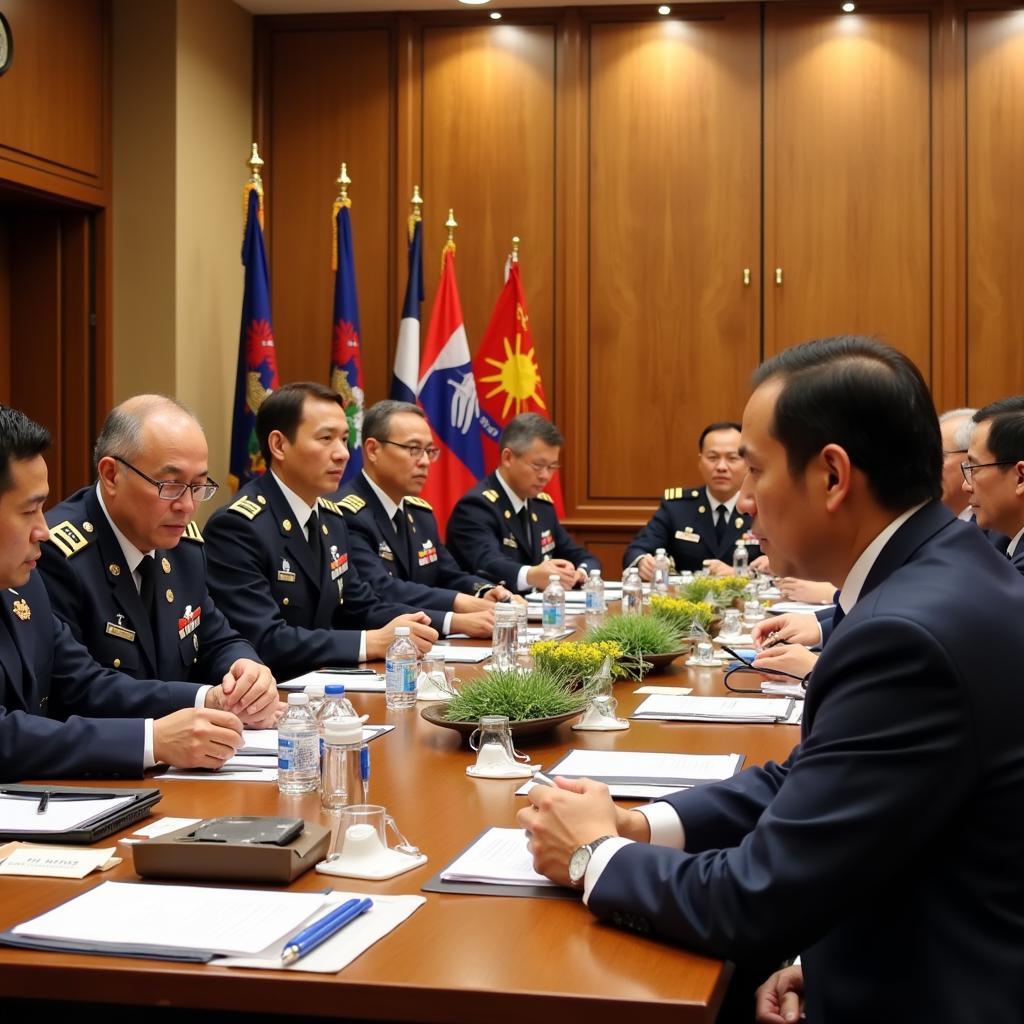The Asean 5 Wiki is a valuable resource for understanding the core of the Association of Southeast Asian Nations (ASEAN). This article delves into the history, significance, and individual contributions of these five founding members, exploring their roles in shaping the regional landscape.
The Significance of ASEAN 5
The term “ASEAN 5” refers to the five founding members of ASEAN: Indonesia, Malaysia, the Philippines, Singapore, and Thailand. These nations laid the groundwork for the organization in 1967 with the signing of the Bangkok Declaration. This pivotal document outlined the shared vision of these nations for peace, stability, and cooperation in Southeast Asia. The ASEAN 5’s formation represented a crucial step towards regional solidarity, fostering a platform for dialogue and collaboration amidst the Cold War’s complexities.
Indonesia, as the largest member state, has played a crucial role in ASEAN’s development, often acting as a mediator in regional disputes. Malaysia has championed economic cooperation, actively promoting trade and investment within the bloc. The Philippines, with its strategic location, has been a key player in maritime security initiatives. Singapore, a vibrant economic hub, has contributed significantly to ASEAN’s economic integration. Finally, Thailand, with its rich cultural heritage, has fostered greater cultural understanding and exchange among member states.
Key Milestones of the ASEAN 5
The ASEAN 5 have achieved numerous milestones over the decades, solidifying their commitment to regional development. The establishment of the ASEAN Free Trade Area (AFTA) in 1992 significantly boosted intra-regional trade, fostering economic growth and integration. The ASEAN 5 have also played a crucial role in addressing regional security challenges, including transnational crime and terrorism, through collaborative initiatives and information sharing.
Furthermore, the ASEAN 5 have been instrumental in promoting socio-cultural cooperation, fostering greater people-to-people contact through educational exchanges, cultural programs, and tourism initiatives. This has contributed to a stronger sense of ASEAN identity and community.
 ASEAN 5 Economic Cooperation: Charting Growth Together
ASEAN 5 Economic Cooperation: Charting Growth Together
What are the challenges faced by ASEAN 5?
Despite significant achievements, the ASEAN 5 continue to face various challenges. Disparities in economic development among member states remain a concern, requiring targeted efforts to bridge the gap. Navigating geopolitical complexities and maintaining regional stability in the face of evolving power dynamics also pose significant challenges.
“The ASEAN 5 must continue to adapt and evolve to effectively address emerging challenges,” notes Dr. Maria Santos, a prominent Southeast Asian political analyst. “Strengthening internal cohesion and fostering greater cooperation are crucial for navigating the complexities of the 21st century.”
asean 50 philippines 2017 wiki
Looking Ahead: The Future of ASEAN 5
The ASEAN 5 remain at the heart of ASEAN’s continued growth and development. As the foundation of the organization, their collective strength and commitment to collaboration are essential for achieving ASEAN’s goals. Further deepening economic integration, enhancing regional connectivity, and promoting sustainable development are key priorities for the future.
Professor Ahmad Ibrahim, an expert in ASEAN studies, adds, “The ASEAN 5 must prioritize inclusive growth, ensuring that the benefits of regional integration are shared equitably among all member states.” This will be critical for fostering sustainable development and promoting social harmony.
Conclusion
The ASEAN 5 wiki provides essential information for understanding the foundation and evolution of ASEAN. These five founding nations have played, and continue to play, a vital role in shaping the regional landscape. As ASEAN moves forward, the continued collaboration and commitment of the ASEAN 5 are crucial for achieving a more integrated, prosperous, and peaceful Southeast Asia. The ASEAN 5 keyword reminds us of the historical significance and ongoing importance of these nations in driving regional progress.
FAQ
- Who are the ASEAN 5? Indonesia, Malaysia, Philippines, Singapore, and Thailand.
- When was ASEAN founded? 1967
- What is the significance of the Bangkok Declaration? It established ASEAN.
- What is AFTA? ASEAN Free Trade Area.
- What are some challenges faced by ASEAN 5? Economic disparities and geopolitical complexities.
Need support? Contact us 24/7: Phone: 0369020373, Email: [email protected], or visit us at: Thôn Ngọc Liễn, Hiệp Hòa, Bắc Giang, Việt Nam.

